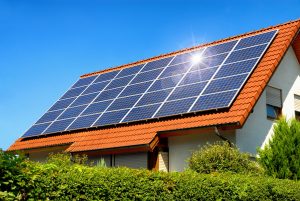 California is blessed with sunshine, and with incentives from the state, solar panels are getting easier and more affordable to install. If you’d like to do your part for the environment while cutting your electricity bills down to nothing, there are few better ways to do it than with solar energy. If you’re thinking of adding solar panels to your home, now is an ideal time to do it, and technicians are standing by to help you plan and install your system.
California is blessed with sunshine, and with incentives from the state, solar panels are getting easier and more affordable to install. If you’d like to do your part for the environment while cutting your electricity bills down to nothing, there are few better ways to do it than with solar energy. If you’re thinking of adding solar panels to your home, now is an ideal time to do it, and technicians are standing by to help you plan and install your system.
Before you do that, however, you should start thinking about some of the factors that will be involved. The sooner you can get a handle on them, the sooner you can start enjoying the benefits solar energy has to offer. Here are a few things to talk over with your service technician as you start the planning process.
1. Necessary Power Levels
Your home has a set level of electrical needs, based on its size, the number of appliances you have, and the presence of things like insulation which can affect the size and power output of your HVAC system. All of that needs to be factored in before you start planning. Your solar panels can generate more electricity than you need–you can sell the excess back to the power company in many cases–but you don’t want it to be underpowered or otherwise inadequate.
The technician can start by performing a home energy audit to determine the required output for all of your appliances and electrical systems. That gives you a baseline to go on as you start planning and lets you know exactly what your new system will be expected to produce!
2. Sunlight Exposure
The amount of sunlight your property gets is extremely important, for it will determine how much power the solar panels can be expected to produce. Hills, treeline cover, other buildings, and similar factors can all play a role. In addition, the position of the sun changes in the sky depending on the time of year, and you need your solar panels to catch as much sunlight as possible in summer and winter alike. You and your technician can go through the options, note any potential obstacles to sunlight exposure, and plan the placement of your panels accordingly (as well as arranging for things like tilting panels to catch the most amount of sunlight at any given time).
3. Placement
Once you know the power levels required from the panels and the spots they need to be to make the most of sunlight exposure, you need to decide on placement itself. Ideally, solar panels can be mounted on the roof of your home, where they’re out of the way and won’t take up any space. That might not be possible, however, depending on your roof and the property in general–in which case you can place them on the ground or in similar locations.
For more information on solar panels in Sacramento, CA or to plan for an installation, call on Sierra Pacific Home & Comfort, Inc. today!
